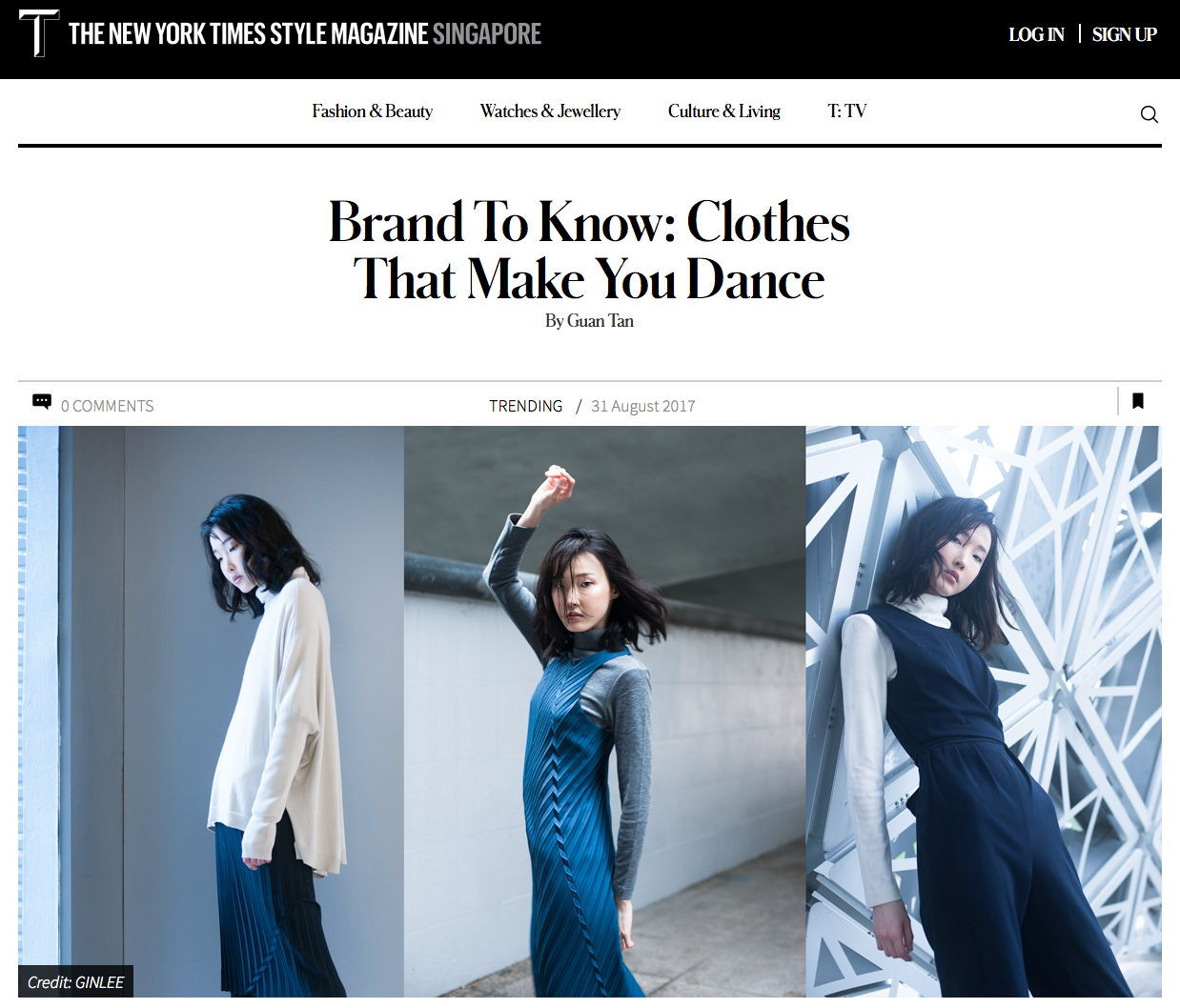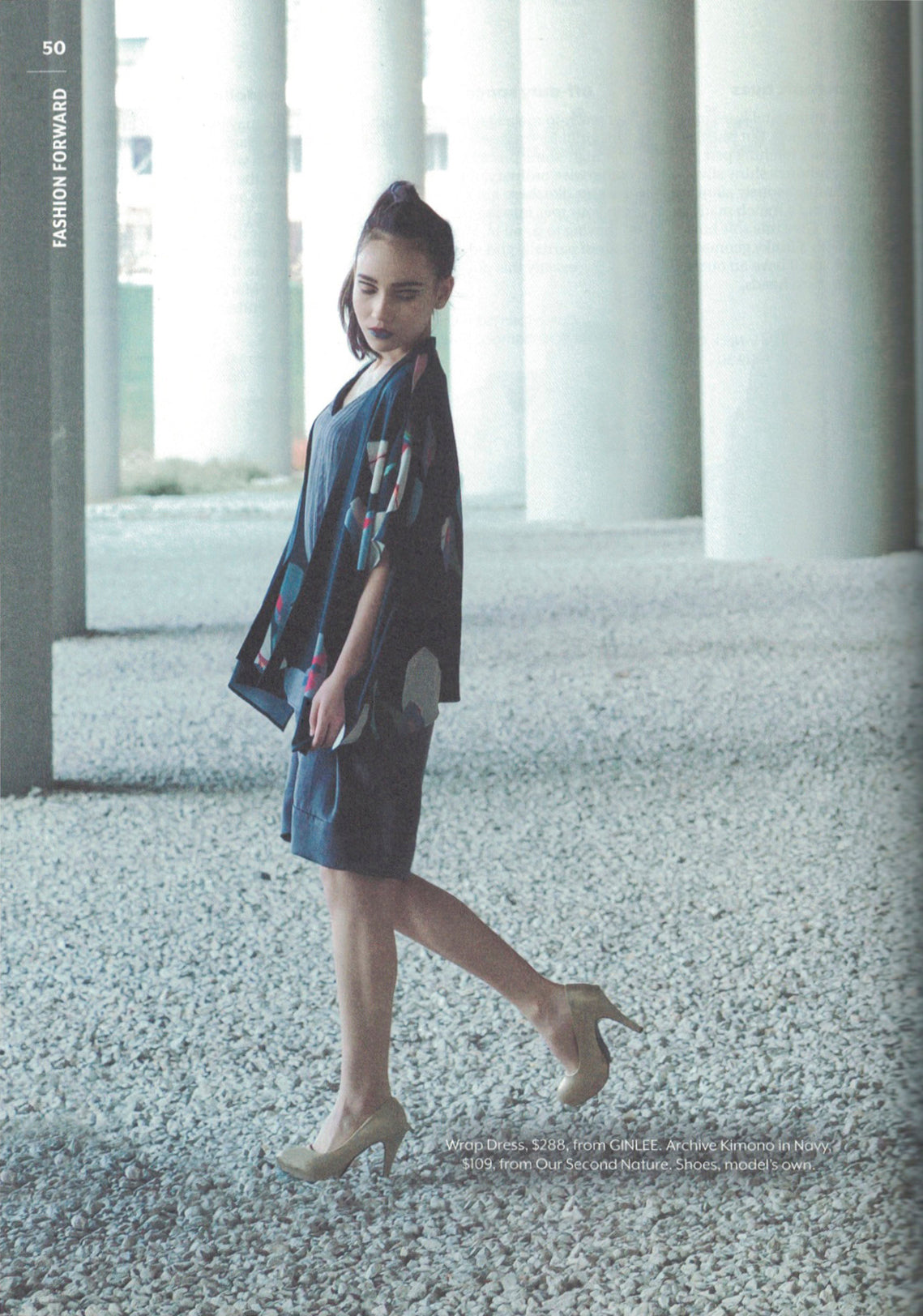THE NEW YORK TIMES SINGAPORE: Clothes That Make You Dance

In the hands of designer Gin Lee, fabrics seem light and ethereal. It may be an intuitive touch. Her dresses, blouses, T-shirts, and jackets seem to be fluttering in a still, quiet room. Looking at them, it leaves you feeling breezy and wispy. It's as if the lightest of fabrics could lift the heaviest hearts.
These are clothes "[women] can work and certainly dance in," Lee confides.
Lee was trained in fashion at the Nanyang Academy of Fine Arts and Central Saint Martins. She founded her eponymous brand abroad six years ago. Three years later, she moved the brand back to her home country, Singapore.
Her design process is very much the traditional, romantic method. "We start from inspirations which stem from our environments, pen it down as sketches, source for suitable fabrics, create artworks – pretty much the old school style."
Yet, it's her choice of materials that give rise to the light-hearted tenor in her clothes. One of her favourite materials is silk. "I'd usually create some silk pieces within each collection as I love how it has a wonderful lustre and is incredibly lightweight. Having produced so much garments in my work, I always feel that silk is one material that is super long lasting and timeless."
Silk dates back to 27 BC in China. The most coveted silk fibres are spun by silk moth caterpillars that feed on mulberrytrees – a species native to China. When weaved, it results in a beautiful, glossy fabric that is light, strong, and incredibly durable. It remains an exalted natural material in the fashion industry today.
Come every season, Lee works with a couple of silk derivatives, like the sand-washed silk and Chinese silk, Habotai.
Although silks are ideal, they are not the easiest to care for. Silks cannot come in contact with water and requires dry-cleaning. For that, Lee opts for some synthetic materials like polyester, rayon-viscose, or modal.
"Synthetic materials are easier to maintain and [are] easier to control when we incorporate textile techniques e.g. pleats, laser cut, digital print," Lee adds. She confesses she prefers synthetics to silk, "because I cannot stand ironing any clothes" in her personal life. "Especially with my two-year-old daughter in tow," she chirps.
Techniques like pleating that synthetic materials license, create even more movement in her clothes. The designs are roomy and twirl around the wearer's body – responding to every step that the wearer takes.
Out there in the buzzing world of fashion, there are clothes made for the hangers. Some are made for models, while others are made for the cameras. There are fewer brands that make well-designed clothes for everyday wear. Lee's label is perhaps, one of them.
Written by: Guan Tan






Comments